Join As Students, Leave As Professionals.
Develearn is the best institute in Mumbai, a perfect place to upgrade your skills and get yourself to the next level. Enroll now, grow with us and get hired.

DataLang: A New Programming Language for Data Scientists
Welcome to our blog, where we dive deep into the revolutionary world of DataLang, a cutting-edge programming language designed specifically for data scientists. Explore how DataLang is changing the game for data professionals, enhancing productivity, and unleashing the full potential of data analysis.
Data lang
Data scientist
Data analysis
Develearn Technologies
3 minutes
September 1, 2023
Introduction:
Programming languages provide the framework on which ground-breaking discoveries and game-changing solutions are made in the field of data science. Data scientists need tools that help expedite their processes, maximize the value of data, and improve their analytical skills as the need for data-driven decision-making grows. Let’s introduce DataLang, a ground-breaking new programming language made just for data scientists. In this blog, we’ll examine DataLang’s benefits and capabilities and show how it enables data scientists to learn more about data analytics and visualization.
Built with Data Science in Mind:
DataLang was created specifically to meet the demands and difficulties encountered by data scientists. DataLang offers specific tools and syntax that are suited for activities involving data manipulation, statistical analysis, and machine learning, in contrast to general-purpose languages. Because of its emphasis on data-centric operations, data scientists may simplify their work processes, increasing their productivity and efficiency.
Simple to use and intuitive
Data scientists can create clear and legible code thanks to DataLang’s syntax, which has been thoughtfully designed to be straightforward and user-friendly. DataLang lessens the cognitive strain associated with complicated data operations because to its clear and expressive syntax, allowing data scientists to concentrate on the analytical parts of their job.
Detailed Data Libraries:
An extensive number of pre-built functions and modules for data analysis, manipulation, and visualisation are included with DataLang’s comprehensive range of data libraries. Data scientists may save time and effort by not having to develop repetitious code from scratch thanks to these libraries. Data scientists can easily examine datasets, carry out challenging statistical analysis, and produce instructive visualizations with little to no scripting thanks to DataLang’s comprehensive data libraries.
Effortless Integration with Current Tools:
Popular data science tools and frameworks like NumPy, Pandas, and Matplotlib are all easily integrated with DataLang. For data scientists already acquainted with these technologies, this compatibility enables a seamless transfer, enabling them to capitalize on their prior learning and increase productivity.
Scalability and effectiveness:
Data scientists can effectively manage large datasets and intricate calculations because to DataLang’s efficiency and scalability optimizations. DataLang excels at handling computationally demanding tasks, whether it’s processing terabytes of data or training machine learning models on high-dimensional datasets.
Machine Learning Made Simple:
The development and deployment of machine learning models is made simpler by DataLang’s machine learning capabilities. Data scientists may easily experiment with different models and adjust hyperparameters thanks to built-in support for well-known methods and automated model assessment methodologies. Because of its machine learning capabilities, DataLang is a crucial tool for tasks including categorization, regression, and predictive modeling.
Community-driven and open source:
Open-source programming language DataLang is supported by a strong and friendly community of data scientists, academics, and developers. By actively participating in the language’s development, this community makes sure that DataLang stays modern and adaptable to the changing demands of data scientists.
Conclusion:
To sum up, DataLang is a revolutionary programming language designed specifically for data scientists. In the hands of data scientists, its user-friendly syntax, extensive data libraries, easy interface with current tools, scalability, and machine learning capabilities make it a potent tool. DataLang offers a thrilling opportunity for data scientists looking for a language that accelerates data analytics, boosts productivity, and helps them to draw insightful conclusions from large, complicated datasets. Embrace DataLang and set off on a data-driven adventure that will transform the way you deal with data, giving you the ability to make better choices and spur new developments in the field of data science.





